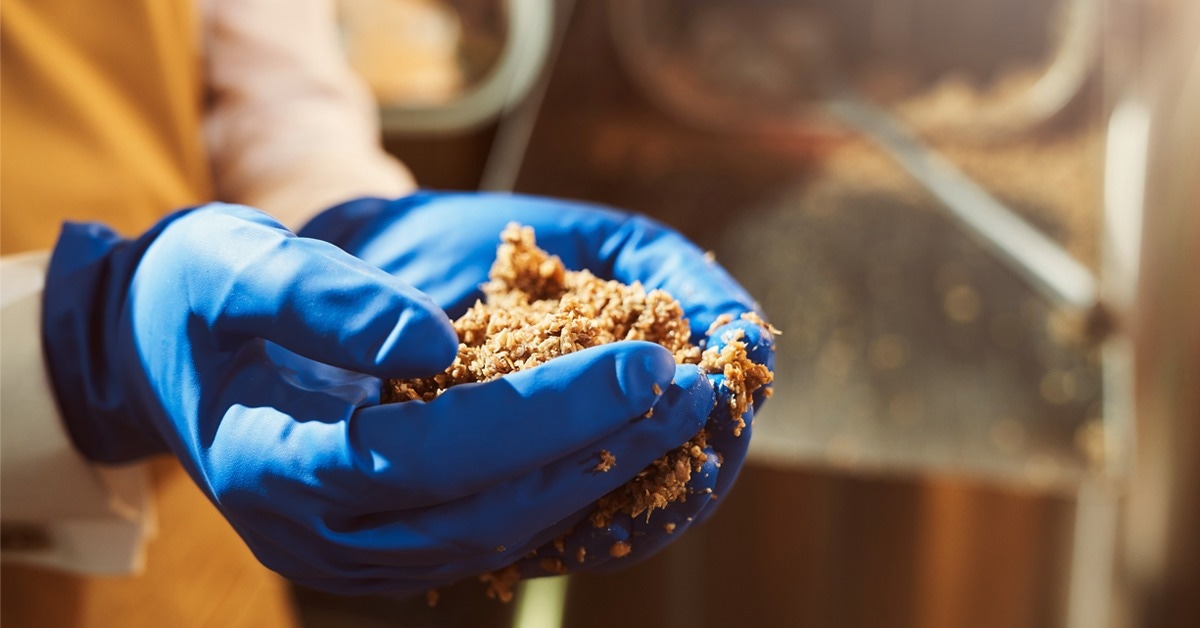Wasted grain, or cereal residue from brewers, has been repurposed in animal feed for some years now. This material can also be utilized in nanotechnology.

Image Credit: Institut national de la recherche scientifique.
Professor Federico Rosei’s team at the Institut national de la recherche scientifique (INRS) has demonstrated that brewing waste can be utilized to create quantum dots as a carbon source.
The research, conducted in cooperation with Claudiane Ouellet-Plamondon of the École de technologie supérieure (ÉTS), was published in the journal RSC Advances by the Royal Society of Chemistry.
Quantum dots, often known as “manufactured atoms,” are utilized in light transmission. This form of nanotechnology, with a variety of intriguing physicochemical features, has been effectively exploited as a sensor in biomedicine or as LEDs in next-generation displays.
However, there is a disadvantage. Current quantum dots are made from heavy and hazardous metals such as cadmium. Carbon is an intriguing option due to its biocompatibility as well as its accessibility.
An Eco-Responsible Approach
Daniele Benetti, a postdoctoral researcher at INRS, and Aurel Thibaut Nkeumaleu, the master’s student at ÉTS who carried out the research, chose brewery trash as a supply material.
Essentially, they intended to do several experiments with readily available materials. This is how the scientists ended up working with the Brasseurs de Montréal to gather grain residues.
The use of spent grain highlights both an eco-responsible approach to waste management and an alternative raw material for the synthesis of carbon quantum dots, from a circular economy perspective.
Professor Federico Rosei, Institut national de la recherche scientifique
The main benefit of utilizing brewery waste as a source of carbon quantum dots is that it is naturally loaded with nitrogen and phosphorus. This eliminates the requirement for pure chemicals.
This research was a lot of fun, lighting up what we can do with the beer by-products. Moreover, ÉTS is located on the site of the former Dow brewery, one of the main breweries in Quebec until the 1960s. So, there is a historical and heritage link to this work.
Claudiane Ouellet-Plamondon, Canada Research Chair, Sustainable Multifunctional Construction Materials, École de technologie supérieure
An Accessible Method
Along with employing biobased materials, the researchers hoped to demonstrate that carbon quantum dots could be produced using conventional methods. The scientists carbonized the wasted grain in a home microwave oven, yielding a black powder. It was then combined with distilled water and microwaved again.
The quantum dots were obtained after a centrifuge cycle and enhanced filtering. Their final product could identify and measure heavy metals as well as other pollutants that impair water quality, the environment, and health.
Besides the proof of concept, the next step will be to characterize these carbon quantum dots derived from brewery waste. The team says that this nanotechnology could be used to make sensors that detect a variety of aqueous solutions, even in living cells.
About the Study
Aurel Thibaut Nkeumaleu, Daniele Benetti, Imane Haddadou, Michael Di Mare, Claudiane Ouellet-Plamondon, and Federico Rosei published “Brewery waste grain generated carbon dots for metal sensing” in the Royal Society of Chemistry journal RSC Advances on April 14th, 2022.
The Natural Sciences and Engineering Research Council of Canada (NSERC), the Quebec Centre for Advanced Materials (QCAM), and the Canada Research Chairs funded the research.
Journal Reference:
Nkeumaleu, A. T., et al. (2022) Brewery spent grain derived carbon dots for metal sensing. RSC Advances. doi:10.1039/D2RA00048B.